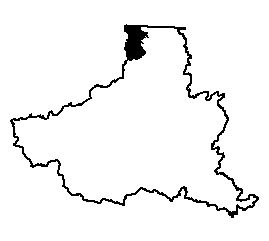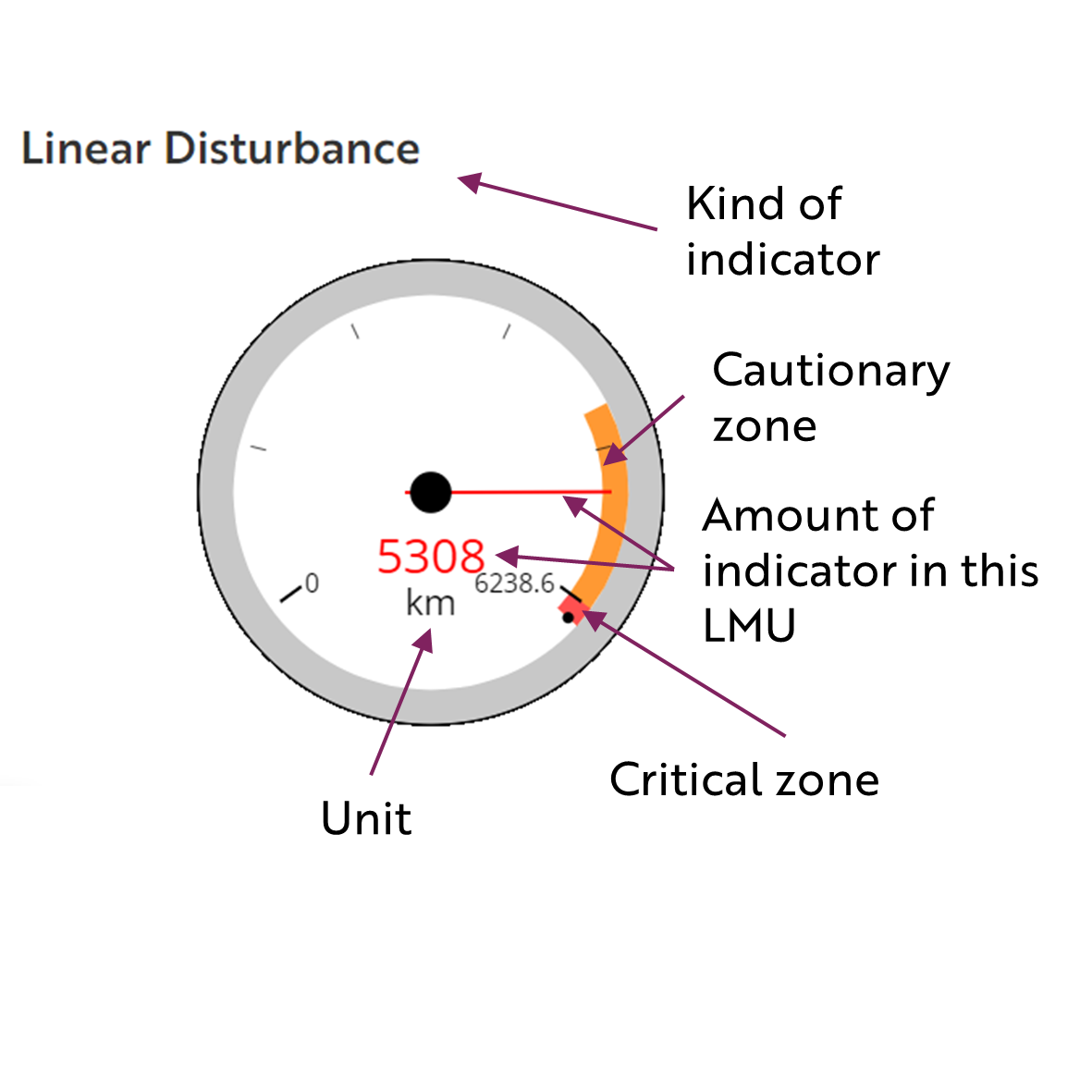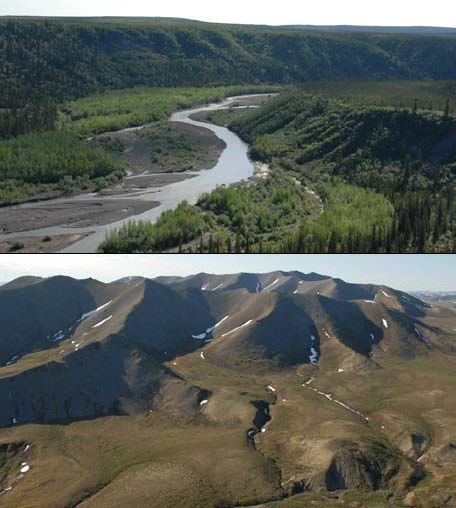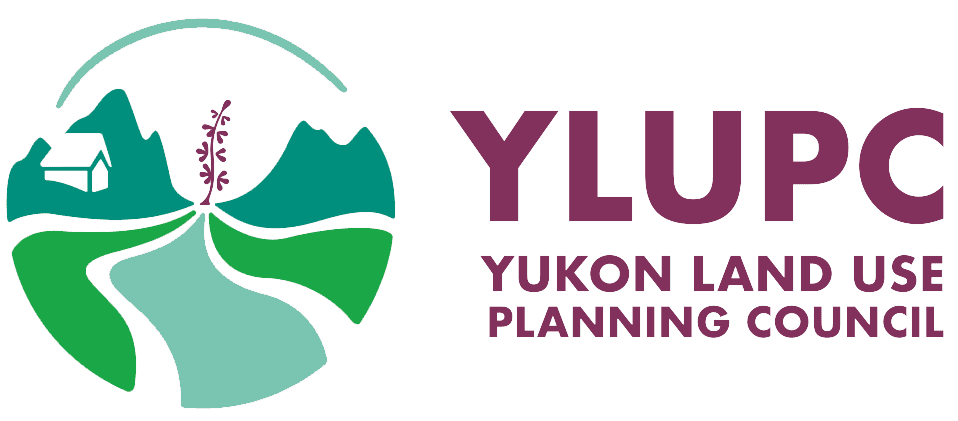PEEL WATERSHED PLANNING REGION:
LMU 12: Richardson Mountains and Vittrekwa River
Land Use Designation
Special Management Area
Land Status
Non-Settlement Land
Traditional Territories
Na-Cho Nyäk Dun, Vuntut Gwitchin, Tetłit Gwich’in Primary and Secondary Use Area
Area
1,619 km2 (2% of Region)

Implementation News
- This LMU is moving towards getting a protected area status, and will be renamed then. It’s boundaries may change slightly.

Objectives
- Wilderness character is maintained.
- Archaeological resources are protected and integrity of First Nation cultural practices is maintained.
- Unfettered movement and habitat use of Porcupine caribou herd, Dall’s sheep and other large mammals.
- Habitats are maintained for water birds and fish, along with the watershed and hydrological functions upon which they depend.
- Wilderness tourism activities linked the Dempster Highway that are consistent with the objectives above and don’t require significant infrastructure.
Rationale for Designation
- Borders a Conservation Area in the Gwich’in Land Use Plan
- Porcupine caribou herd uses this area for habitat and as an important migration route.
- Extensive wilderness hiking opportunities within a short distance from the Dempster Highway.
- Includes a Yukon Key Wetland complex.
- Several traditional travel routes traverse the unit. Other culturally important places also exist.
- A small and isolated population of Dall’s sheep that may be at risk of decline is found here.
- A regionally unique and culturally important Dolly Varden spawning runs up the Vittrekwa River to spawn.
- The steep escarpments that overlook the Vittrekwa and adjacent Road rivers are underlain with permafrost and therefore are especially susceptible to surface disturbance. This susceptibility is predicted to increase as a result of climate change. Resulting slope failures could result in hydrological changes catastrophic to the Vittrekwa River wetlands.
- Low to moderate mineral potential, with no current claims. Part of the Peel Plateau and Plain basin with lower oil and gas potential.
Cumulative Effects Thresholds
Relative to LMU Size*
Surface Disturbance (%)
Linear Density (km/km2)
Current disturbance (2020)
0.0732
0.0838
Cautionary
0.0
0.0
Critical
0.0
0.0
On the ground amounts**
Surface Disturbance (km2)
Linear Disturbance (km)
Current disturbance (2020)
1.19
135.7
Room under cautionary threshold***
0
0
Cautionary
0
0
Critical
0
0
*These are proportional to the size of the LMU, and correspond to table 3-2 of the Approved Plan. They are measured in the % of the LMU that can be disturbed (“Surface Disturbance”) and in km/km2 (“Linear Disturbance Density”).
**These are amounts that can be measured and apply to the whole LMU and would be more familiar to project proponents and regulators. They are measured in km2 of disturbance and in km of linear disturbance (e.g., roads, trails and cutlines).
***How much more disturbance can be added to existing disturbance before the cautionary threshold is reached.
Cumulative Effects Indicators
Surface Disturbance
Linear Disturbance
Cautionary
Critical
These gauges show how much of each disturbance indicator there is in the LMU with the needle and the large number near the middle. The colours indicate disturbance level zones or thresholds. If the needle is in the white zone, no threshold has been reached.
The Dawson Planning Commission gives a details of their similar (but slightly different) Cumulative Effects Framework on their website.

Cautionary
Critical
Biophysical Setting
Setting
Unglaciated, sparsely forested mountains and foothills dividing Eagle Plains from the Peel Plateau giving way to Perched wetlands and an adjacent riparian strip on the NWT border west of the Peel River.
Ecoregions
British Richardson Mountains and Peel River Plateau
Bioclimatic Zones
Alpine, Taiga Shrub and Taiga Wooded
Image Explanation
Deciduous forests, and steep escarpments are found along the upper Vittrekwa River in the eastern portion (top). Gentle mountains interspersed with valleys carpeted with alpine vegetation characterize the western portion (bottom). (CWS photos).

Ecological Resources
Caribou
Extensive concentrated and general use areas for Porcupine herd for fall and winter seasons, despite generally low predicted habitat potential for the Porcupine herd. Exposed slopes are important foraging areas, especially in high snow years.
Moose
High habitat use and quality along creeks and around wetlands.
Marten
Concentrated moderate to high winter habitat suitability around wetlands and on lower slopes to the south of the unit.
Sheep
Large areas of highly suitable winter habitat with documented (TK, scientific) habitat use. However, the population is small and isolated and is at risk of decline.
Fish
Fish likely present on lower gradient streams; some winter open water areas, one known sea-run fish spawning site on Vittrekwa River.
Grizzly Bear
Moderate to high habitat suitability, especially high in riparian zones.
Peregrine Falcon
Birds (General)
Pockets of high value waterbird habitat and in riparian areas; moderate breeding species richness and high concentration of species of conservation concern.
Vegetation
Low – mid elev. shrub and conifer forest, subalpine shrub and alpine exposed rock.
Wetlands, Lakes and Riparian Areas
Several large lakes and wetland complexes and hundreds of scattered wetlands; key wetland area (YG) around Vittrekwa River and Lakes. Forms the upper watersheds of Vittrekwa, and Road Rivers.
Permafrost
Extensive high water content permafrost expected. Wetlands perched above incised valleys and stable slopes rely on intact permafrost.
Special Features
One documented wildlife pass and one possible pass.
Heritage, Social and Cultural Resources
Heritage Resources
High concentration of VG and TG archaeological sites. Several TG culturally important places. Travel route through Road River from Kit Creek; Route along unnamed creek from Dempster to Peel River.
Palaeontological Resources
Economic Development
Transportation and Access
One old winter roads; a conceptual access route has been identified in this unit from Dempster Hwy to Road River. Several seismic lines or trails.
Traditional Economy
TG seasonal land use and traditional harvesting and wildlife areas.
Recreation and Tourism
High value hiking in with access from Dempster Highway. Snowmobiling and wildlife viewing.
Forestry
Little potential for forestry.
Big Game Outfitters and Trapping
No registered concessions.
Oil and Gas Resources
Peel Plateau and Plain basin with low potential in the flatter eastern portion of unit.
Mineral Resources
Generally low mineral potential.
Special Management Considerations
- Dempster Corridor management directions apply near the Dempster Highway.
- Subsequent Dempster Highway land use plan may apply near the Dempster Highway.
